Admittedly after staying away from the stock 787/747 airliners, I decided to give the 747-800 a go in massive style by flying one of THE world’s most critical ETOPS long haul flights, YSSY-FAOR. I am beyond pleased. It is still too basic for my “study-level” tastes but it provided me an opportunity to see if MSFS could dependably handle a 14 hour flight, be agreeable to the fuel used, and be half way enjoyable. Verdict, I fully enjoyed it.
I highly recommended researching the “how to” videos out there on creating your own wing-views if you want to have an immersive experience. Otherwise, drone camera to take in the views. Also, you will not be planted at your computer desk the entire flight as even real-life pilots have a 6 hour break usually on such journeys.
After going through the basic step of using SimBrief, download an app called RestBreakOptimiser for your mobile device. This what the pros use to figure out when the pilot rest breaks will be. I will expand on this in a minute.
For some reason the database had the private aircraft airport (FALA) for Johannesburg, but good enough for now.
I am on the east coast of the United States here, so preflight boarding and planning began around 2030 local (please everyone should know that is 8:30pm), with a planned departure at 2115, 0215 GMT - which is about lunch time over Sydney. Your virtual passengers have enjoyed a nice summer holiday there in Oz and it’s time to head home, some other virtual passengers are Aussies on their way for a proper safari holiday in South Africa. Hopefully we will get right back to these times soon enough.
Now open the RestBreakOptimiser app and input the information that it asks for, to include the flight plan’s total ETE off the paperwork.
Also modify Break Options to end your break at 1:15 before landing. In the real world, this is typically set at 0:45 minutes.
Usually we would have 4 pilots total for a flight as this, but put it at 3 so you will be able to get to your actual “rest” earlier on. The calculation in a 3 pilot scenario would provide each about 4 hours rest. As we are [on our own] in the MSFS world, we will take their breaks all at once for ourselves. A nice 8 hours break in the bunk.
IRL, on taxi-out the relief pilot in charge of the breaks will have their mobile device at the ready to record the actual take off time and then pass on the actual break times to the flying pilots. Shortly thereafter the relief pilot(s) gather their things and head to break.
Once you reach cruise, take a stock of your fuel and you should review the weather at your ETOPS Alternates (as you also are the dispatcher) - then take a look at your break time which from noted above, starts at 0627Z or 0127 EST.
This gives us plenty of time to enjoy the views for the next four hours or so, on one of the the longest continuous flights you could accomplish in MSFS.
Pictured below: Just after the relief pilot(s) left for their break, we continue on our climb out, headed south, passing the string of highly rated beaches of New South Wales.
Pictured below: Heading off the coast of Tasmania, and on the verges of entering the void of the Southern Ocean. ETOPS entry point is only 30 minutes away. Time to call for our inflight meals. I selected the salmon over quinoa meal, with the side salad.
Out over the ocean, even just sitting there - it’s all about monitoring fuel burn and progress respect to winds aloft. Also important to step climb as well. My initial level off was at FL340, and will culminate at FL400 about 7 hours into the flight. I was able to get to the point of reaching FL380, which was about 5 hour mark before going to bed.
As 0627Z arrives, I administratively finished the step climb to FL380, cross checked the fuel management panel, and fuel quantities. I am looking on target for an on-time arrival with a rough guess of landing with 45,000 imperial pounds in the tanks. I will not be able to step up to FL400 since I will be fast asleep, but this should not have a material impact on my overall on getting to Johannesburg safely. I hand the aircraft off to my imaginary “relief pilot” and have a square 8 hours to just sleep away.
Pictured below: The polar ice cap on the horizon before going to bed.
My alarm is set for 1430Z, aka 9:30 am here on the East Coast of the United States. I feel rested and turn the monitor(s) back on and I am pleased to see my trusty 747-800i flying along, M.085 as planned and pleasantly surprised to see that the high winds and the lower altitude did have a 10,000 lb hit on the flight plan.
As an aside, I now turn off REX Weather Force for Live Weather and see a difference in atmospheric modeling and satellite (cloud cover) representation. I have enjoyed REX since its later updates, but it still will not be able to compete with MSFS Live Weather presentation of global satellite imagery. This was a good flight to test it on. On the flip side, for very local flights, REX seems to have the upper hand in presenting hazy skies and more accurate cloud bases. Jury is still out.
With my previous input of 1 hour 15 minute before landing in the RestBreakOptimizer, I am able to wake up, stretch, get a cup of joe, check the news, and then get to the matter of preparing for arrival in a very comfortable manner.
Pictured below: Coming off the arrival, landing 03R this morning. I have my taxi plan ready to go. As a wide body Captain - your aircraft faces some notable and physical restrictions due to its size when on the surface!
Pictured below: Parked at the international pier in FAOR, Tambo Intl. Around 1045 EST, 1545Z. Satisfied.
In conclusion, again I was pleased how this all worked out. It felt similar, like at work, where you get airborne, fly for several hours, then go on break to wake up, shake off that sleep inertia, get the coffee going and by the time your back up front, it’s pre-dawn over Paris and within moments you will be in Zurich. We get the same results here and a nice, almost 14 hours into MSFS logbook (which seems to be working more than it is not working). I don’t recall bouncing the landing but it gave me credit for 2? ![]()
I hope you enjoyed this.
Pictured below: Our trusty aircraft has five days of scheduled maintenance to get it ready for it’s next voyage, next weekend from Johannesburg to Toronto, Canada (CYYZ).
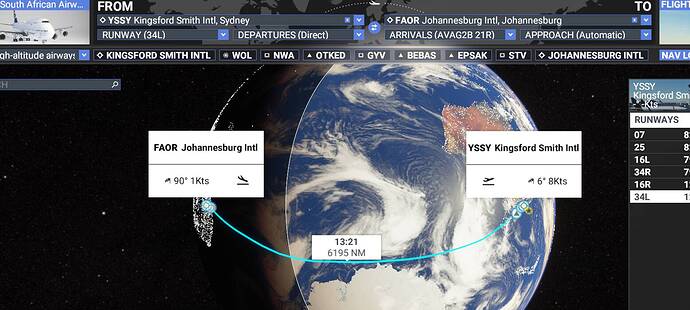
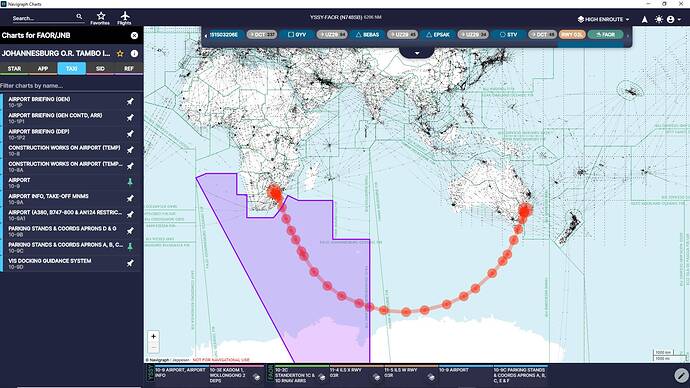

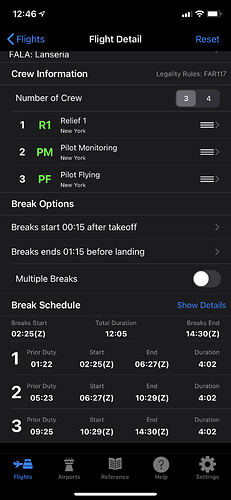

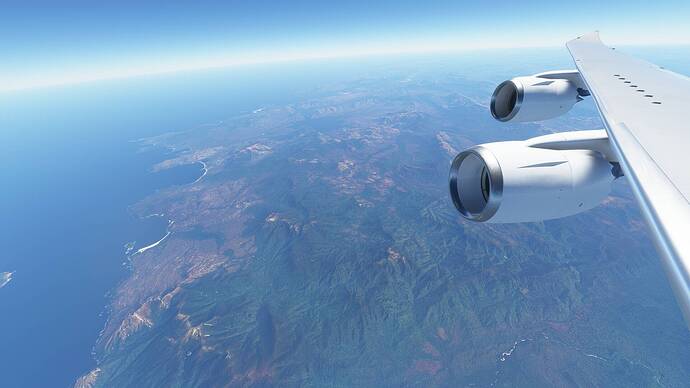


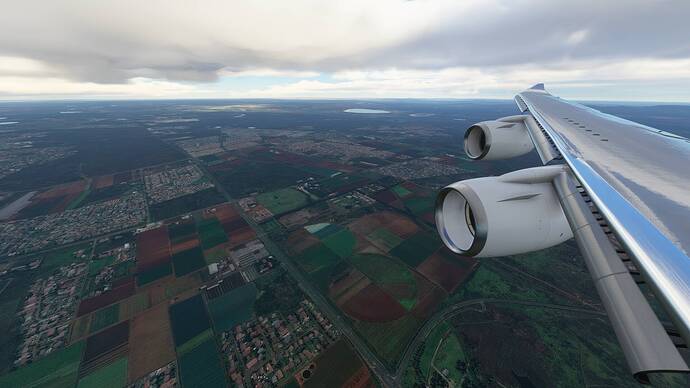


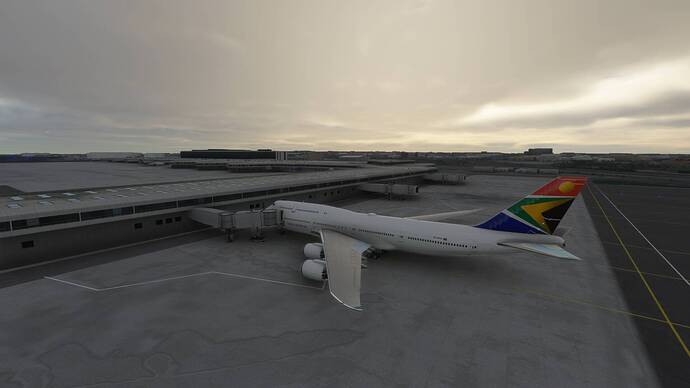

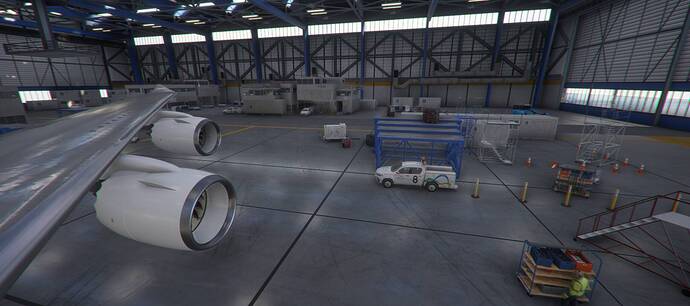
 I’m gonna try and discover a way to go trans-atlantic via several legs.
I’m gonna try and discover a way to go trans-atlantic via several legs.